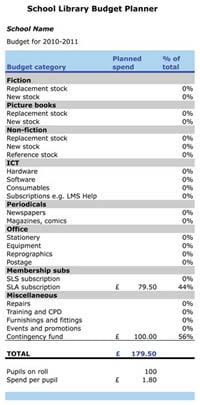The strategies proposed by Debowski are thorough and specific and cover the main issues in selection, acquisition and censorship. (Debowski, 2001). The strategies outline functions and principles that the library collection should follow. Many of these principles are still relevant although the references to electronic resources do not reflect current policies and procedures, to be expected given the publication date of 2001.
Budget proposal
“62% of respondents feel their library is not adequately resourced” according to a Softlink survey in 2017 (Softlink, 2017) as well as school libraries downsizing and being under constant threat for their survival, (Wood, 2017).
Collaboration is a key component of a successful school library. (Softlink, 2018). This concept should apply to preparation of budget proposals. According to Libraries Tasmania, library staff should plan and consult with the school administration and teachers to manage funding, (Libraries Tasmania, n.d.).
It is important for the school librarian to build relationships with all the stakeholders in the school community. It is important to liaise with faculty staff in particular to make sure that funds are allocated in sufficient amounts to cover the cost of resources that support the curriculum. Faculties usually have their own budget for textbooks but liaising with staff can ensure that the budget will permit key resources to be purchased. It is not appropriate for funds to be distributed to faculties for them to buy resources for the library collection. A selection policy for the school library lays out procedures which would assume prior consultation with faculty staff about collection development.
Some school libraries have a committee which could be made up of various stakeholders from different areas of the school. This committee could have input into the funding process though the final say would lie with the teacher librarian. Kimmel reinforces this idea emphasising the need for “a collection-development plan” that describes a “big picture” and that “presents the budget” to the executive or other parts of the school community, (Kimmel, 2014, p. 70).
My experience of budgeting is that the allocation for the school library is preset with little room for negotiation. However, the P& C are usually very enthusiastic about supporting the library and are often keen to organise fund raisers.
References
Curtis, N. (2019). CLEAR collaboration goals for school libraries [Blog post]. Retrieved from https://www.softlinkint.com/blog/clear-collaboration-goals-for-school-libraries/
Debowski, S. (2001). Collection management policies. In K. Dillon, J. Henri & J. McGregor (Eds.), Providing more with less: collection management for school libraries (2nd ed., pp. 126-136). Wagga Wagga, NSW: Centre for Information Studies, Charles Sturt University.
Kimmel, C. (2014). Developing Collections to Empower Learners. [America Library Association]. Retrieved from https://ebookcentral.proquest.com/lib/csuau/reader.action?docID=1687658
Libraries Tasmania. (n.d.). Budgeting. Retrieved from https://www.libraries.tas.gov.au/school-library/Pages/managing-budget.aspx
Softlink, (2017). The 2017 Softlink Australian and New Zealand School Library Survey Report. Retrieved from https://www.softlinkint.com/downloads/2017_Softlink_Australian_and_New_Zealand_School_Library_Survey_Report.pdf
Wood, P. (2017). School libraries disappearing as the digital age takes over. Retrieved from https://www.abc.net.au/news/2017-09-25/school-libraries-disappearing-as-the-digital-age-takes-over/8980464

